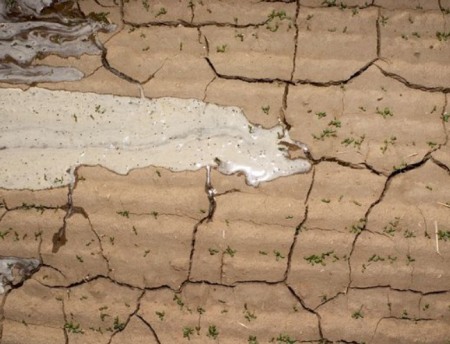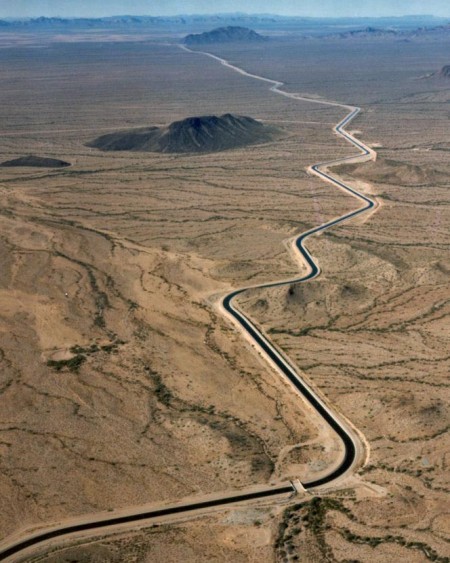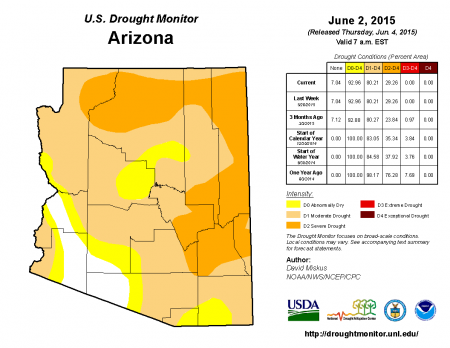June 5, 2015 – Like falling dominoes the various states of the Colorado River and Central Basin of the United States are taking action to conserve freshwater in the face of more than four years of continuous drought. The latest announcement is an executive order from the Governor of Utah, Gary Herbert, who has put a ban on landscape watering during the day and has issued a directive to state facilities to replace plumbing with low-flow fixtures, repair landscape systems, implement leak detection, and begin the process of removing lawns from government buildings.
This week the U.S. Natural Resources Conservation Service reported that the state snow pack had reached an all-time historic low and that state rivers and streams were 30% of normal. The citizens of Utah, however, continue to consume water at some of the highest levels in the United States, an average of 939 liters (248 gallons) per person per day.
Earlier this year Utah began a state-wide rainwater collection program called RainHarvest. It is estimated that residents who purchase a rain barrel can save about 38,000 liters (10,000 gallons) per year. Governor Herbert plans to put in place guidelines and recommendations for all citizens in the state going forward.
Further to the west Nevada has instituted one of the most aggressive water conservation programs ever devised. In 2014 alone Southern Nevada cut water consumption by 6% while its population grew by 60,000. In fact, Las Vegas has in the past decade reduced water consumption by 23% while adding a half million new residents.
How has it done this? The “Cash for Grass” rebate pays homeowners $1.50 US for every 0.09 square meters (1 square foot) of grass up to 465 square meters (5,000 square feet) that is ripped out and replaced with desert landscaping. The savings in freshwater alone amount to 208 liters (55 gallons) per square foot. Where there are new developments in Las Vegas you only see desert landscaping. The lawn is dead. In addition all golf courses use gray water for green and fairway maintenance and are restricted to 19.7 million liters of water per irrigated hectare (2.1 million gallons per acre). Today most of the southern part of the state’s drainwater is captured and returned to Lake Mead and the Colorado River system. Even with all these conservation measures the drought has cost the state $1.4 billion to build new pipelines under Lake Mead to feed Las Vegas and surroundings.
Meanwhile Arizona has watched the Colorado River become less reliable as a freshwater source for cities like Greater Phoenix. Other freshwater sources such as Roosevelt Lake stand 39% full. Six other artificial catchments are at 49% capacity across the state. And even in places like Flagstaff which gets more precipitation than the south the reservoir, Lake Mary, is shrinking. More and more the state is pumping groundwater from deep aquifers watching the underlying water table sink.
A number of years ago Arizona built the CAP Canal (seen above snaking through the desert landscape) to take water from the Colorado River. Because of conservation measures not all that water has been used by Phoenix and Arizona farms. Instead the state has banked it in underground artificial reservoirs almost the equivalent of 2 full years of the canal’s capacity.
As of June 2nd, Arizona’s drought monitor map reproduced below shows that close to 90% of the state is facing moderate to severe drought. Even recent rains have done nothing to alleviate the parched landscape, instead producing flash floods along dried out riverbeds.
How much longer will the drought persist? Climatologists believe the arid conditions may persist for decades equaling the worst drought since the 13th century in the American southwest. At that time drought periods lasting up to 50 years at a time turned the southwest into a barren landscape. The Anasazi culture with its cliff dwelling cities vanished. So what California, Utah, Nevada and Arizona have experienced to-date may be only the beginning of many decades of persistent drought. Truly a mega phenomenon.













